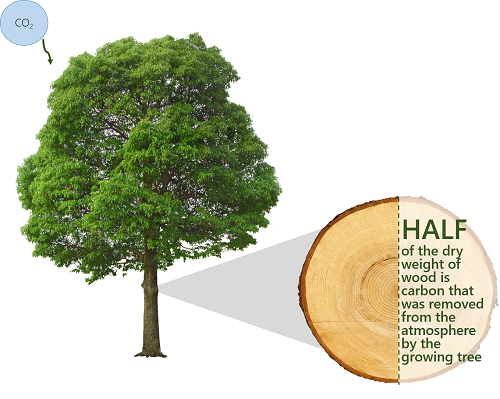Why is forest carbon important?
Forests are considered a natural solution to climate change because they remove carbon dioxide (CO2) - a potent greenhouse gas (GHG) - from the atmosphere and store the carbon in wood and soil. Increasing the amount of carbon stored in Vermont's forests and harvested wood products can reduce the amount of CO2 in the atmosphere while providing the other critical ecosystem services that forests provide.
The forest carbon cycle
Carbon is constantly in flux in a forest. Atmospheric CO2 is taken in by trees and other plants and used to grow leaves, roots, wood, and other parts. As trees die or parts are shed, the carbon is transferred to other parts of the forest and decomposed by insects, fungi, and other organisms. Some of the carbon finds its way to the soil where it can remain for centuries or longer.

See this short overview: Trees, Carbon, and Climate Change
For more information on forest carbon dynamics, terminology, and ecology, check out FPR's guide: What is Forest Carbon?
How much carbon is in Vermont's forests?
Vermont's 4.5 million acres of forestland are a net carbon sink, meaning that each year they take in more CO2 from the atmosphere than they emit. Vermont's forests store over 1.7 billion metric tons (Mt) of CO2 equivalent (CO2e) and sequester (take in) more than 5 million Mt CO2e each year. To put this in context, each year Vermonters emit about 8 million Mt CO2e.
For more information on the carbon in Vermont's forests, check out FPR's assessment: Vermont Forest Carbon Inventory.
More Resources
Forest Carbon: an Essential Natural Solution for Climate Change by Paul Catanzaro and Tony D'Amato


